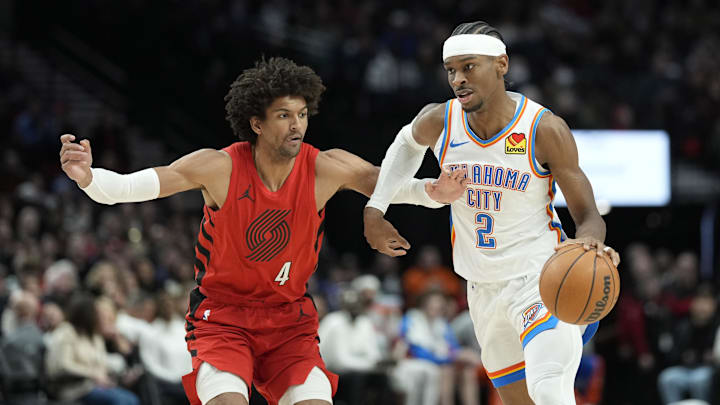The Oklahoma City Thunder and General Manager Sam Presti have set the blueprint for rebuilding teams around the NBA. They finished tied for the best record in the Western Conference at 57-25 despite their core trio of Shai Gilgeous-Alexander (SGA), Jalen Williams, and Chet Holmgren all being 25 years or younger.
The Thunder's blockbuster trade with the Los Angeles Clippers for SGA, who ascended as an MVP-level player this season, had much to do with their rebuilding success. The Thunder sent over Paul George but got their own younger superstar in return in SGA, along with a whopping five-round draft picks.
The Blazers didn't get quite the same haul when they sent Damian Lillard to the Milwaukee Bucks. However, there is still one significant aspect of the Thunder's rebuild that the Blazers can emulate.
Blazers need to add more versatility to their roster
Oklahoma City places significant value on versatility when constructing its roster. There are several examples of versatile players on their roster. Still, it was most evident in the 2022 NBA Draft, where they selected Chet Holmgren at No. 2 overall and Jalen Williams at No. 12. Holmgren is a 7-foot-1 center who can protect the paint and stretch the floor, fitting the mold of the modern-day big man. Williams can reasonably play positions one through four on the court and is already one of the league's most dynamic, interchangeable players.
The Thunder are exceptional at scouting talent and seeing how prospects' games can translate to the next level within their system. Meanwhile, the Blazers are in the opposite position and could benefit from integrating the Thunder's model. Portland has too much redundancy on their roster, both in terms of positions and skillset. For one, they are imbalanced with too many backcourt players and a lack of forwards.
But, even more importantly, the skillset of their best players don't complement each other. Jerami Grant, Deandre Ayton, Shaedon Sharpe, and, to a certain extent, Anfernee Simons are all score-first players. The Thunder have a team of playmakers who make quick reads and keep the ball moving within the flow of their half-court offense. The Blazers' best floor general is Malcolm Brogdon, who shouldn't be considered part of their long-term core.
Additionally, the Blazers have too many one-dimensional players on their roster. For instance, Matisse Thybulle is one of the league's best defenders but is subpar offensively. Simons is an elite shooter but a defensive liability. Today's NBA exposes lineup weaknesses now more than ever, and the Blazers need to do a better job of assembling a more well-rounded roster, similar to the Thunder.
This offseason, Portland must target more versatile, two-way playmakers. Some players that fit the criteria that the Blazers might be able to acquire include Keldon Johnson (via trade), Lonnie Walker IV (via free agency), and Kyshawn George (via draft).
